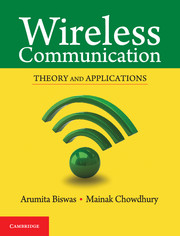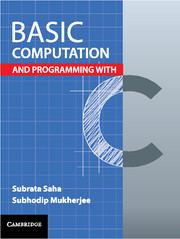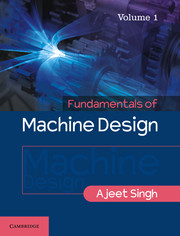Refine search
Actions for selected content:
37953 results in Cambridge Textbooks
4 - Surface Temperature from a Star’s Color
- from Part I - Stellar Properties
-
- Book:
- Fundamentals of Astrophysics
- Published online:
- 10 November 2025
- Print publication:
- 24 July 2025, pp 25-31
-
- Chapter
- Export citation
Preface to the First Edition
-
- Book:
- Fundamentals of Astrophysics
- Published online:
- 10 November 2025
- Print publication:
- 24 July 2025, pp xvii-xviii
-
- Chapter
- Export citation
4 - Socioeconomic Stratification and Mental Disorder
- from Part I - Theoretical Perspectives on Mental Health and Illness
-
-
- Book:
- Sociology of Mental Health
- Published online:
- 18 September 2025
- Print publication:
- 24 July 2025, pp 54-72
-
- Chapter
- Export citation
7 - The Sociology of Suicide
- from Part I - Theoretical Perspectives on Mental Health and Illness
-
-
- Book:
- Sociology of Mental Health
- Published online:
- 18 September 2025
- Print publication:
- 24 July 2025, pp 111-124
-
- Chapter
- Export citation
Dedication
-
- Book:
- Fundamentals of Astrophysics
- Published online:
- 10 November 2025
- Print publication:
- 24 July 2025, pp v-vi
-
- Chapter
- Export citation
16 - Mental Health Care in the Community
- from Part III - Mental Health Systems and Policy
-
-
- Book:
- Sociology of Mental Health
- Published online:
- 18 September 2025
- Print publication:
- 24 July 2025, pp 265-275
-
- Chapter
- Export citation
19 - Light Intensity and Absorption
- from Part II - Stellar Structure and Evolution
-
- Book:
- Fundamentals of Astrophysics
- Published online:
- 10 November 2025
- Print publication:
- 24 July 2025, pp 128-136
-
- Chapter
- Export citation
21 - Stigma in Global Context
- from Part III - Mental Health Systems and Policy
-
-
- Book:
- Sociology of Mental Health
- Published online:
- 18 September 2025
- Print publication:
- 24 July 2025, pp 345-360
-
- Chapter
- Export citation
Appendix D - Radiative Transfer
-
- Book:
- Fundamentals of Astrophysics
- Published online:
- 10 November 2025
- Print publication:
- 24 July 2025, pp 291-294
-
- Chapter
- Export citation
Appendices
-
- Book:
- Fundamentals of Astrophysics
- Published online:
- 10 November 2025
- Print publication:
- 24 July 2025, pp 279-294
-
- Chapter
- Export citation
2 - Astronomical Distances
- from Part I - Stellar Properties
-
- Book:
- Fundamentals of Astrophysics
- Published online:
- 10 November 2025
- Print publication:
- 24 July 2025, pp 11-18
-
- Chapter
- Export citation
1 - Introduction
- from Part I - Stellar Properties
-
- Book:
- Fundamentals of Astrophysics
- Published online:
- 10 November 2025
- Print publication:
- 24 July 2025, pp 3-10
-
- Chapter
- Export citation
11 - Black American Women and Mental Well-Being
- from Part II - The Social Context of Mental Health and Illness
-
-
- Book:
- Sociology of Mental Health
- Published online:
- 18 September 2025
- Print publication:
- 24 July 2025, pp 185-200
-
- Chapter
- Export citation

Wireless Communication
- Theory and Applications
-
- Published online:
- 21 July 2025
- Print publication:
- 16 January 2017
-
- Textbook
- Export citation

Basic Computation and Programming with C
-
- Published online:
- 17 July 2025
- Print publication:
- 24 May 2016
-
- Textbook
- Export citation

Fundamentals of Machine Design
-
- Published online:
- 17 July 2025
- Print publication:
- 29 May 2017
-
- Textbook
- Export citation
5 - Clustering methods
-
- Book:
- Financial Data Science
- Published online:
- 17 December 2025
- Print publication:
- 17 July 2025, pp 111-130
-
- Chapter
- Export citation
12 - Beyond the mean/variance model
-
- Book:
- Financial Data Science
- Published online:
- 17 December 2025
- Print publication:
- 17 July 2025, pp 311-336
-
- Chapter
- Export citation
14 - Text analytics
-
- Book:
- Financial Data Science
- Published online:
- 17 December 2025
- Print publication:
- 17 July 2025, pp 371-396
-
- Chapter
- Export citation
3 - Data models and estimation
-
- Book:
- Financial Data Science
- Published online:
- 17 December 2025
- Print publication:
- 17 July 2025, pp 31-80
-
- Chapter
- Export citation
